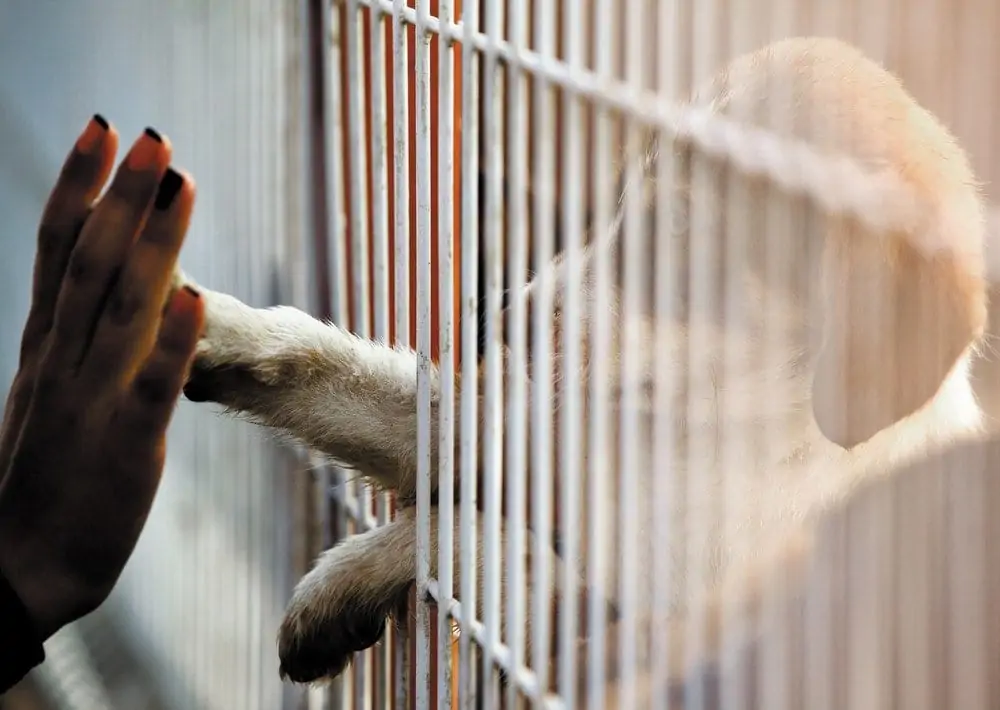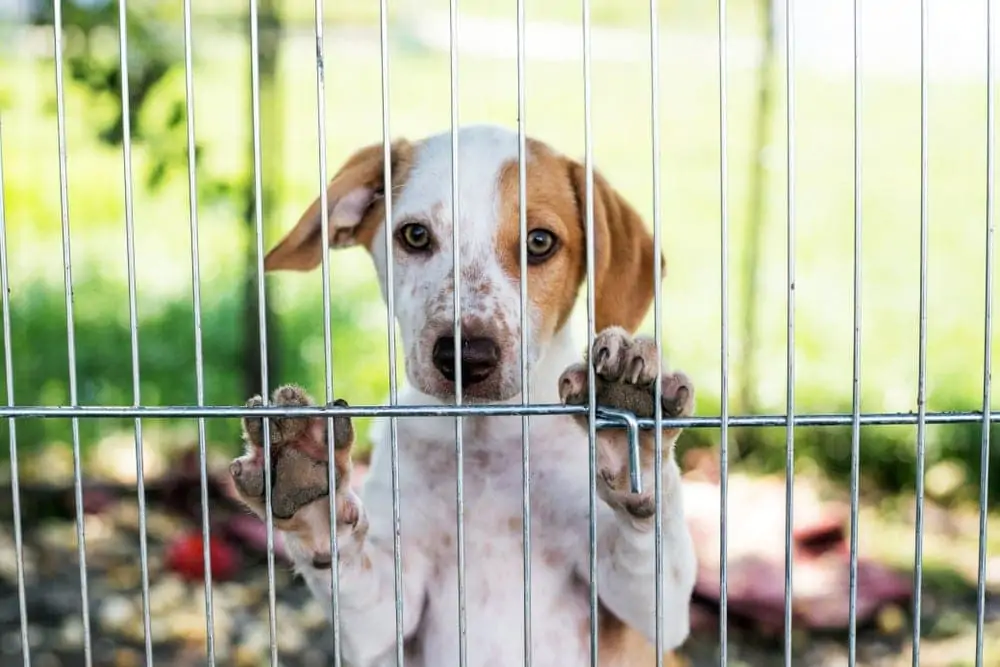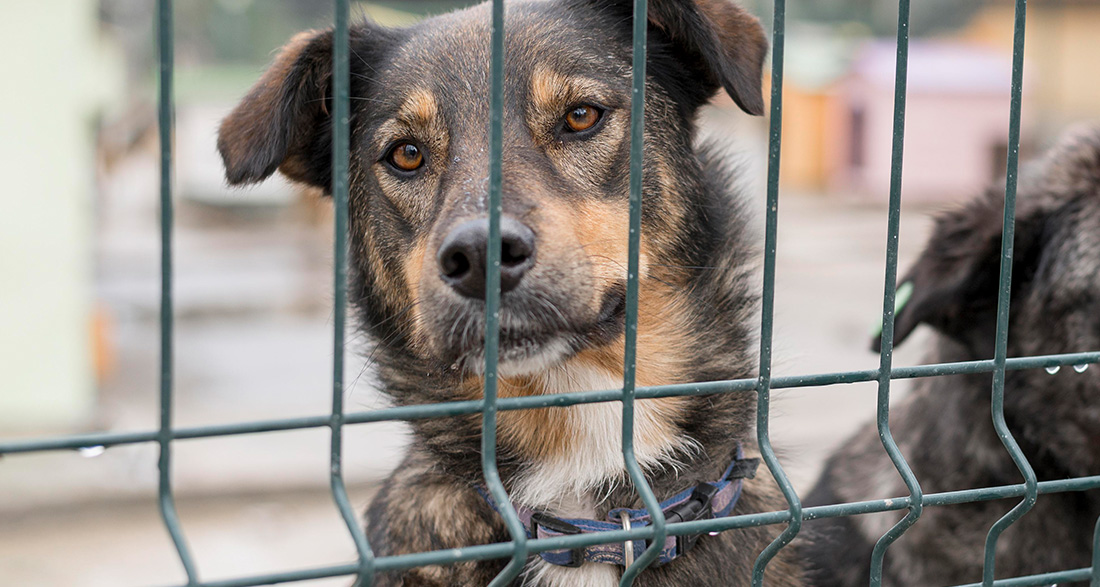There’s nothing more heartwarming than seeing a newly adopted dog, happily leaving the shelter with its new family in tow. These dogs seem to appreciate the fact that they have a new lease on life, and it shows – their tails couldn’t wag any harder.
But what about all the other dogs left behind? What happens to those who never find a new home?
We’ll show you what happens to these unfortunate dogs, but beware: this isn’t a cheerful article, so you might want to have tissues handy.
- Most Shelters Can’t Refuse to Take In an Animal
- What Are the Chances for a Dog in a Shelter?
- Does the Dog’s Behavior in the Shelter Matter?
- How Long Does It Take for a Dog to Find a Home?
- What Happens When a Dog Is Euthanized?
- Is there a way to solve the problem?
- That’s so depressing, are there any good news?
- Adopt, Don’t Shop
Most Shelters Can’t Refuse to Take In an Animal
If you want to surrender a dog in most shelters, they’ll take it – because they have to. Many shelters are bursting at the seams. When you add up dogs surrendered by owners and strays picked up by animal control, you have a shelter with more dogs than available spaces.
They have to get them out somehow, and hopefully, that means finding them loving homes. But that’s not always the case.
The alternative is euthanizing the animal, something many shelters do at a depressingly high rate.
What Are the Chances for a Dog in a Shelter?

Every dog in a shelter has a fair chance of being adopted. According to the ASPCA, 6.5 million pets enter shelters each year, and only 3.2 million leave.
The odds are not equal for everyone. Puppies have the best chance of leaving the shelter, while older dogs have significantly poorer prospects. The breed also plays a role – Chihuahuas and pit bulls are the hardest to adopt (even though shelters often mislabel their breeds). Color can be a factor too, with black animals having a 50% lower chance of adoption.
Animals with visible injuries or illnesses also struggle to find homes. Most potential owners are simply not willing to take a risk on a dog that could lead to a fortune in vet bills.
Does the Dog’s Behavior in the Shelter Matter?
Not really. Most dogs are, after all, good, and being sweet is not reason enough to spare them when the whole shelter is overflowing.
Sometimes, a volunteer or another shelter staff member may become particularly attached to a specific animal. They might try to encourage people to adopt it or take it home themselves. However, this is the exception, not the rule.
It’s also worth noting that dogs undergo temperament tests upon arriving at the shelter. Any sign of aggression often leads to euthanasia without a chance to find a home. If the dog is allowed to live, the shelter will likely release it only to a rescue group for adoption.
However, these temperament tests are often hasty and rudimentary, and the shelter is a terrible place for dogs, causing many of them to exhibit atypical aggression during the examination.
How Long Does It Take for a Dog to Find a Home?

It depends on how overcrowded the shelter is. If there’s space, many shelters will keep dogs as long as possible, giving them every chance to find a loving family. However, most shelters rarely have much space.
When a shelter reaches full capacity, the dog doesn’t have much time. Most shelters commit to holding the dog for five days; beyond that, it’s a matter of luck.
Strays are given even less time, while dogs with families stay longer as the shelter tries to locate their owners.
If many people express interest in adopting a particular dog, it will probably be kept longer. Puppies that perform well in temperament tests may also get a bit more time.
However, eventually, every dog has to go, one way or another.
What Happens When a Dog Is Euthanized?

When a dog’s time has run out, it is led from its kennel to the euthanasia chamber. There, euthanasia specialists inject a lethal dose of chemicals into the dog’s leg. It takes a few moments for the chemicals to take effect, and then the dog is gone.
Do Shelters Kill Dogs? What about no-kill shelters?
Some shelters practice no-kill policies, meaning they do not euthanize dogs unless it’s for medical reasons. While this is certainly preferable to shelters where many animals are euthanized, it doesn’t contribute as much to solving the problem as you might think.
The issue is space. No-kill shelters fill up just as quickly as high-euthanasia shelters, often even faster because they can only get rid of dogs through adoptions.
So, what happens when a no-kill shelter runs out of space? While it’s true they don’t euthanize dogs, they also stop accepting new animals. Those rejected are often passed on to high-euthanasia shelters. Some no-kill shelters, however, try to find other shelters with available space before surrendering a dog to a traditional shelter.
This has sparked intense debates among animal advocates, with some asserting that no shelter should be considered no-kill until all shelters adopt a no-kill policy. The reasoning behind this is that many people prefer adopting from no-kill shelters, leaving dogs in traditional shelters facing euthanasia.
Is there a way to solve the problem?
The best way to end the reliance on shelters is to reduce the population of stray and unwanted animals. This generally involves spaying or neutering as many dogs as possible, and there are currently many programs aimed at achieving just that.
Another way to reduce the number of euthanized animals is to ensure that every stray is reunited with its owner. Microchipping is an excellent way to ensure the right families are contacted before it’s too late.
Law enforcement is also focusing on eliminating puppy mills and dogfighting rings, often sources of stray dogs. When a dog loses value for the operators of these organizations, they often release it, making it a shelter’s problem.
Additionally, it’s about encouraging people to adopt dogs from shelters instead of buying them from breeders. Every adopted dog saves two lives: the life of the adopted animal and the life of the dog taking its place in the shelter.
That’s so depressing, are there any good news?

Yes! The number of euthanized pets has dramatically decreased in recent years.
In the last decade, the number of euthanized animals has dropped from 2.6 million per year to 1.5 million. While still a significant number, it means over a million animals are spared each year.
Adoptions have also increased, from 2.7 million to 3.2 million. That’s half a million animals finding new homes instead of languishing in shelters.
Even better, many states and communities are committing to transition to no-kill shelters in the future. It is hoped that a combination of improved education, more comprehensive sterilization practices, and no-kill shelters will result in virtually no pets being euthanized in the years to come.
Adopt, Don’t Shop
Now that you know what happens to dogs that aren’t adopted, consider deciding to adopt your next pet from a shelter and encourage your friends and family to do the same. When opting for adoption, ask yourself a few questions.
Most shelter dogs are just as good as their purebred counterparts, and they are considerably more affordable. Moreover, you can be certain your money is benefiting other dogs and not contributing to the continuation of a breeding operation.
Above all, through adoption, you can make the dream of a less fortunate dog come true.


